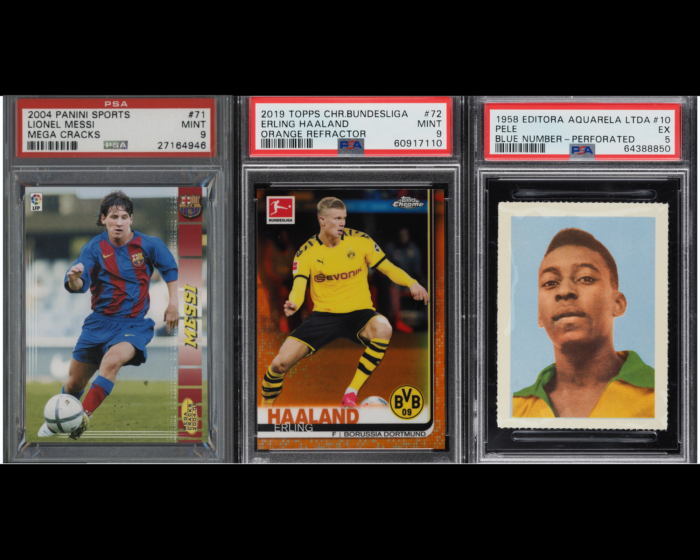
This Week in Soccer Cards – 03/24/2023
I. Major Recent Sales Messi is on top of our list with the highest winning

Click edit button to change this text. Lorem ipsum dolor sit amet consectetur adipiscing elit dolor
With the World Cup afoot, a new generation of collectors is being introduced to Soccer / Football cards via Panini’s quadrennial World Cup stickers, cards, and albums – the FIFA World Cup Qatar 2022 Official Collection. This has created a media storm of interest in the hobby, as countless outlets are writing about Panini’s most recent album, from 60 Minutes doing an in-depth review to the Washington Post covering a ‘crisis’ due to a shortage of World Cup stickers in Argentina.
What is not been discussed though, are the other great World Cup sets that have been released, beyond just the most recent Panini set. So we at PeleCards.com wish to recognize and celebrate the greatest World Cup sets from years past, with this list of the Top 5 Most Iconic World Cup Soccer card sets ever released. The sets in this list are weighted on impact to soccer card history and overall coolness and collectability.
So, without further ado, here are the top 5 most iconic World Cup soccer sets that have ever been printed:
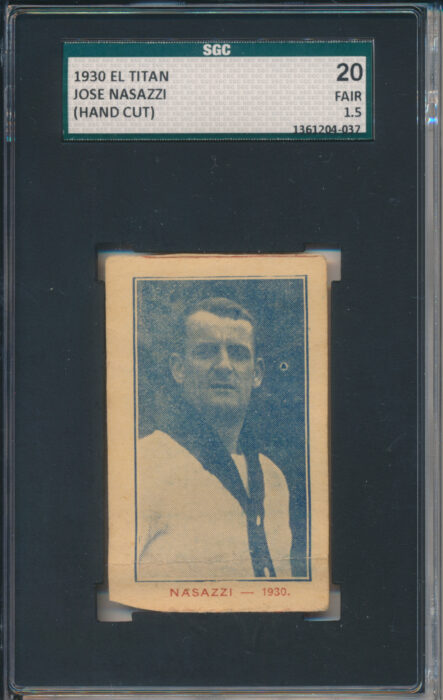
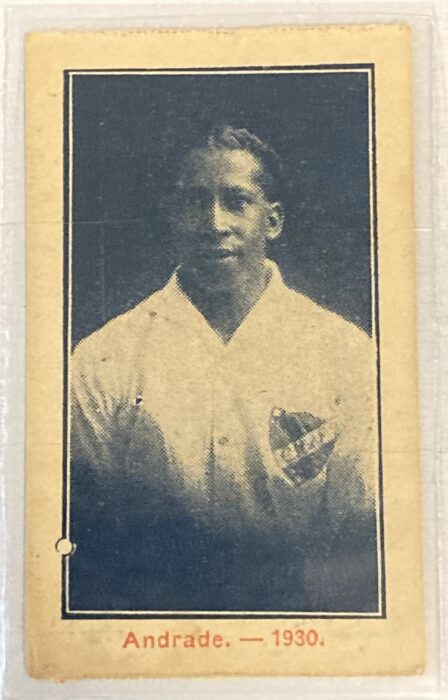

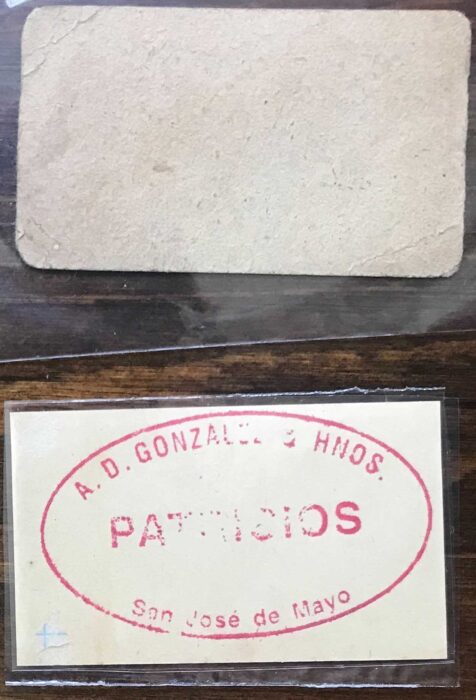
The first ever world cup was played in Uruguay in 1930. And Uruguayan small businesses wanted to get in on the celebration and promote their brands at the same time, so the local companies released cards to hand out to patrons and to advertise their businesses. These cards show the Uruguayan National Team members of the 1930 World Cup, as well as some team shots of Uruguay and other countries that participated.
Because multiple different local companies distributed these cards, there a number of variations / sets. The most common set is simply known as El Titan and was released by El Titan Bar (and maybe other locations as well). A second set / variation was released by Chocolate Franco which is composed of nine cards. Additional variations can be found of different advertisements stamped on back, such as the Particios shown above.
The most valuable card from the set is of legend Jose Nasazzi who was the captain of Uruguayan National Team in the 1930 World Cup and had previously won gold in the 1924 and 1928 Olympics. Besides Nasazzi, the next most valuable card is of Uruguayan great Jose Leandro Andrade. This is followed in value by Pedro Cea, Hector Castro, and Hector Scarone. There is also a super rare card of the USA team in some of these sets, that has not had a recent sale, but will likely strike a high price when it finally comes to light again.
The 1930 World Cup was held in Uruguay which was also celebrating its 100th-anniversary independence. Argentina and Uruguay were the finalists and the final match was energetic as both teams already had a storied football feud. The match was even more dramatic when Iriarte scored a goal in the 68th minute to give Uruguay the lead for the first time in the match and Hector Castro sealed the victory and trophy for his team with just one minute left on the clock. Thus, the Uruguayan National Team became the first World Cup winner in 1930, giving the local fans all the more reason to celebrate and collect these sets of trading cards that were released locally.
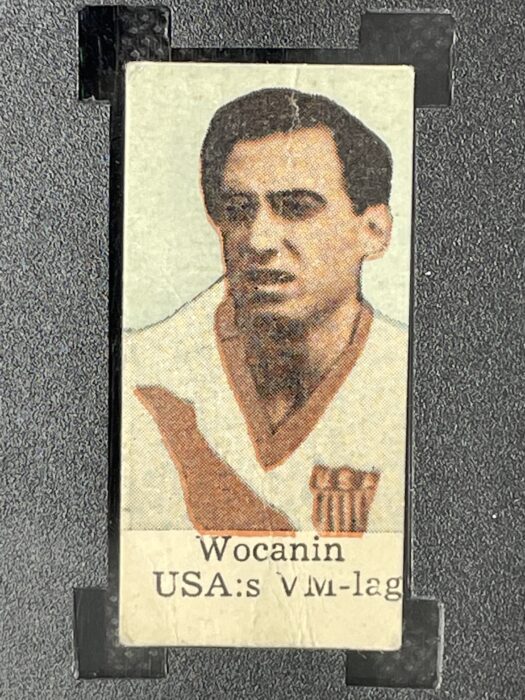

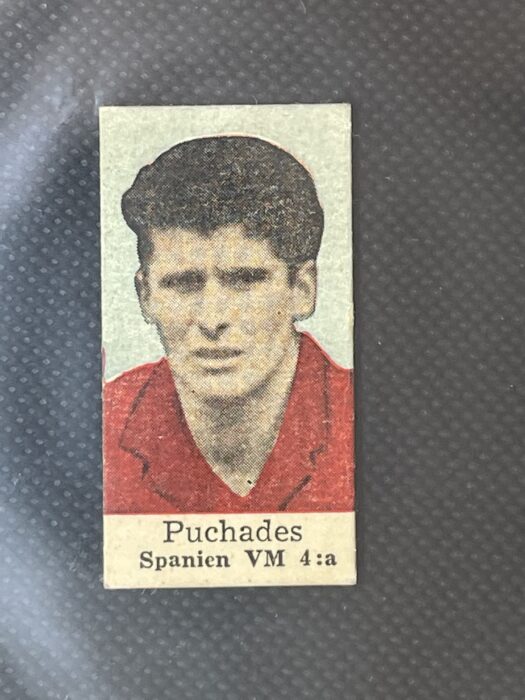
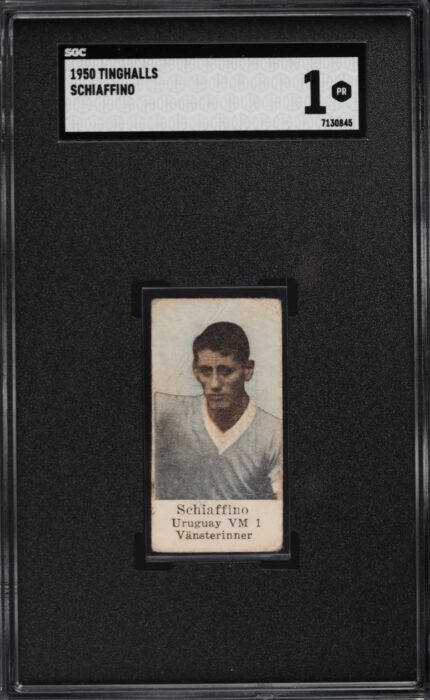
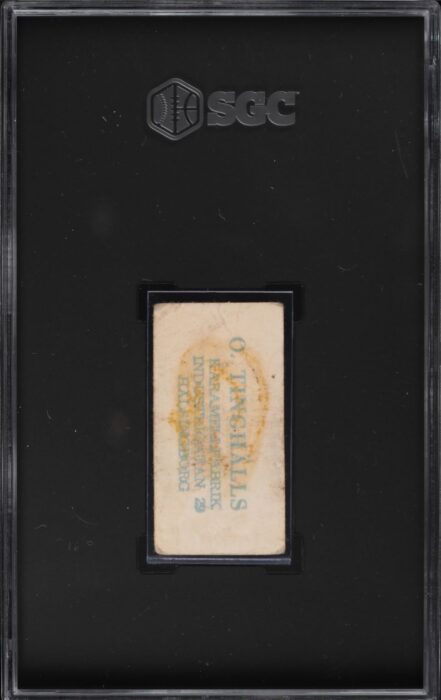

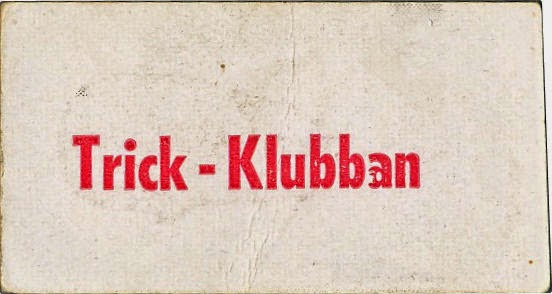
The 1950 Tinghalls set is famous because it feature a lineup of great players that don’t have many other cards – for example, it is one of the few sets to recognize the Hall of Fame 1950 US Soccer team. The set includes cards of players from six different countries that competed in the 1950 World Cup. The set was issued by candy companies in Sweden and the back has different names stamped on it, depending on the kind of candy it came with. Some of the back variations include ‘O. Tinghälls’, ‘Flamingo-Fabriken’, ‘RAIA’ or the ‘Trick-Klubban.
The set of cards shows famous players from different teams. We have Alcides Ghiggia who played as a right winger and Juan Schiaffino as an attacking midfielder; they were both from the Uruguayan National Team. The cards also include players from the Brazilian football club Sao Paulo; Ademir de Menezes who was regarded as one of the best forward and Thomaz Soares da Silva “Zizinho” who played as a midfielder.
Brazil hosted the 1950 World Cup, and as a prosperous country then it had built a new colossal stadium for the event, the Maracanã Stadium. Brazil as a football nation came out as a significant contender to the current powerhouses in South America: Uruguay and Argentina. In the final group stage were Brazil, Spain, Sweden, and Uruguay, who was making its first World Cup appearance since winning the inaugural tournament. Brazil won their first two matches beating Sweden and Spain, putting them on top of the group with one game left to play against Uruguay. On the 16th of July 1950 before a huge home crowd in the Maracanã Stadium, the host country only had to draw against Uruguay and the bacon would be theirs. However, Uruguay equalized and then, with just over 11 minutes left to play, Ghiggia went ahead and squeaked a goal past Barbosa and Uruguay was announced as the World Cup champion for the second time. This remarkable defeat brought heartbreak to Brazil and is named the Maracanazo.
#3 Most Iconic World Cup Set: 1970 Panini Mexico
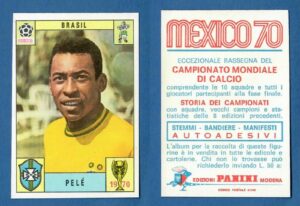
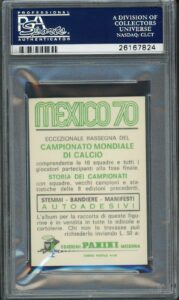
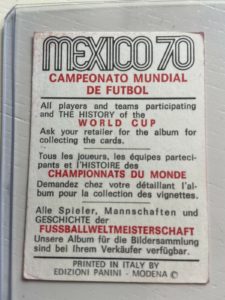
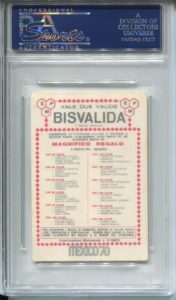
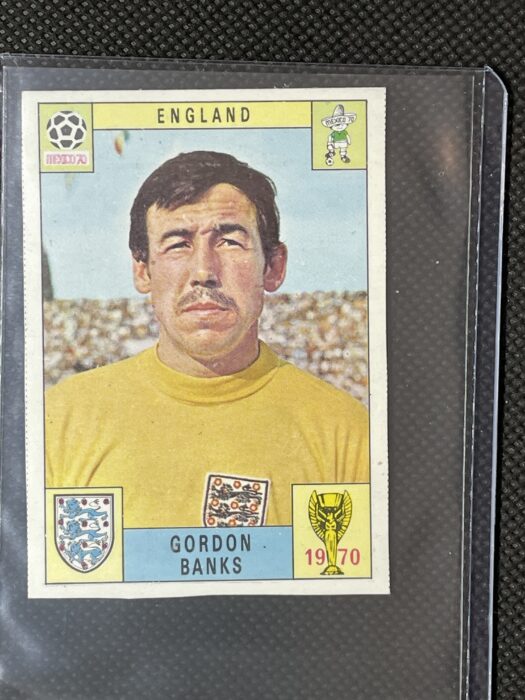
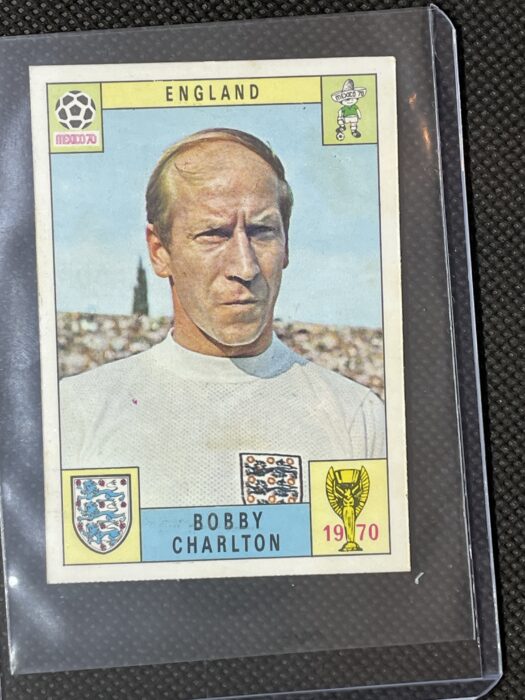
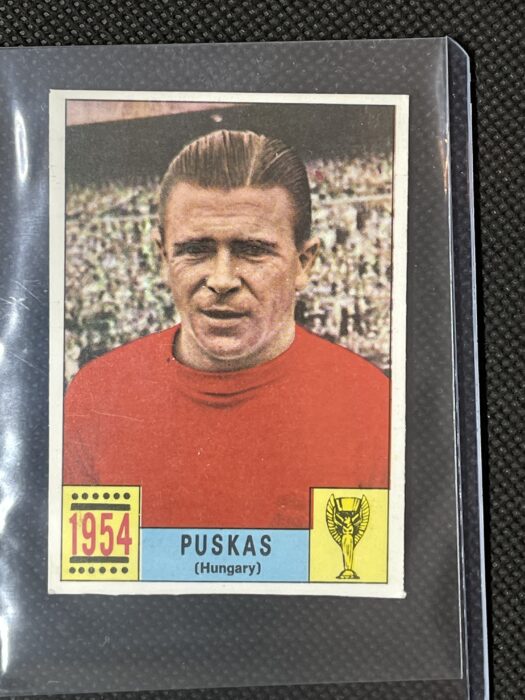
This is the first ever World Cup set issued by Panini and the first ever World Cup set marketed at an international audience. Panini album collectors call this set the “Holy Grail,” because its cards are the most-sought after and the priciest. The 1970 Panini Mexico has a total of 27 stickers and 243 cards produced in Mexico. This set has four different back versions: i) Green, ii) Red / Blue, iii) International Multi-Language, & iv) Bisvalida. Of all of these, the Red / Blue back is by far the rarest, being only released 4 at a time as cut-outs in the Panini Album.
The set of cards features legends from different teams that participated in the 1970 World Cup. The most valuable card is usually of Pele (Edson Arantes do Nascimento) – also the greatest footballer in history – who played as a forward for Brazil. Other legends in the set are Teofilo Cubillas from Peru who played as an attacking midfielder and is considered one of Peru’s greatest players. Ademir and Ghiggia from Brazil and Meazza-Sarosi of Italy also round out this set.
The 1970 World Cup was the ninth year of the FIFA World Cup. It was held in Mexico and it was the first World Cup tournament held outside Europe and South America. Brazil, Italy, Uruguay, and Germany entered the knockout rounds, with Brazil and Italy making it to the finale. In the final, a powerful shot from Gérson of Brazil made way for the Brazilian team to lead the match and further goals from Jairzinho and Carlos Alberto secured victory for Brazil and record the third World Cup triumph. The Brazilian team proved the right to keep the Jules Rimet Trophy.
#4 Most Iconic World Cup Set: 1958 Alifabolaget World Cup

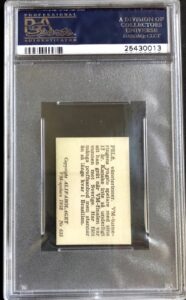
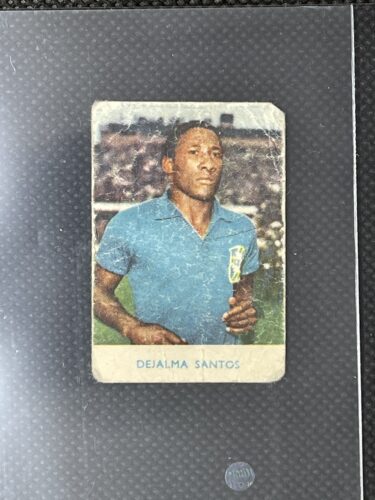
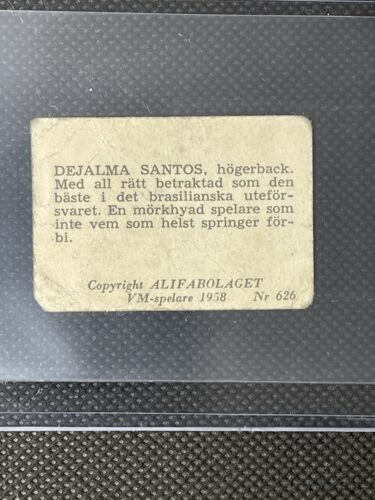
This set, released in Sweden to celebrate the 1958 World Cup, is most famous for its inclusion of a Pele Rookie card. Alifabolaget first released cards in 1949 and was a popular brand in Sweden. The set of cards includes 36 cards of the Brazilian, Swedish, West German, and Welsh teams.
The set of cards shows the famous players and legends of the Brazilian team, Pelé. The Pelé in this set is the holy grail of the set and is the most expensive Pele card of all time. Zito and Garrincha of Brazil were also included in the set.
The set of cards was made to commemorate the World Cup that took place in Rasunda Stadium in Sweden. The final clash was set up by Brazil and Sweden but it was Brazil who closed the match with the powerful moves of Pelé who sealed the 5-2 victory for Brazil.
#5 Most Iconic World Cup Set: 2014 Panini Prizm

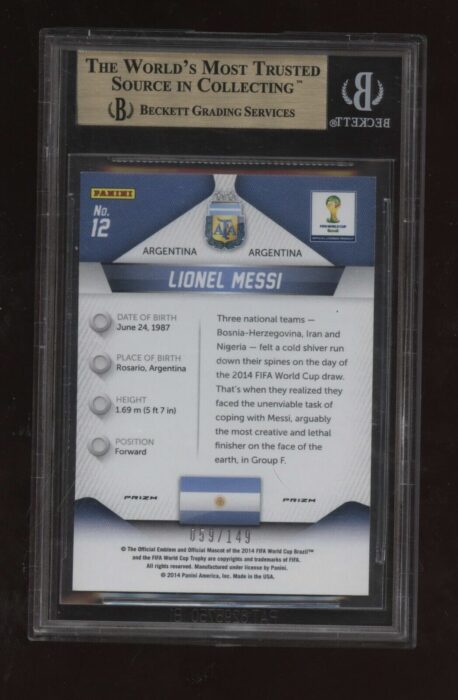
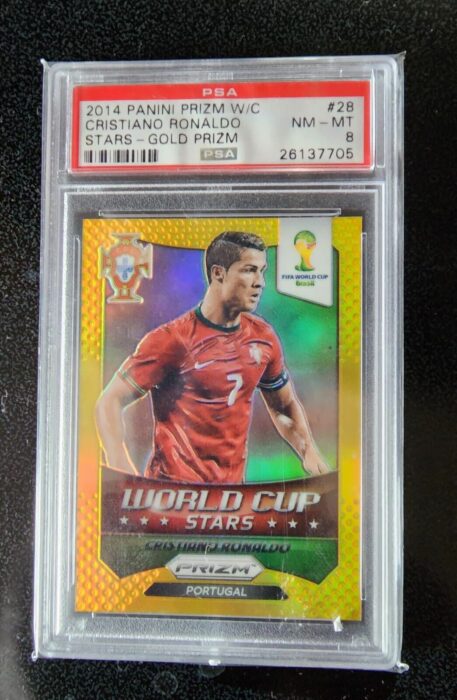
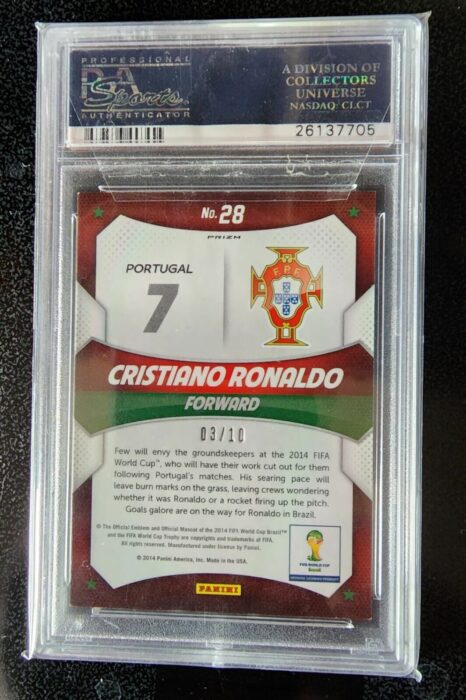
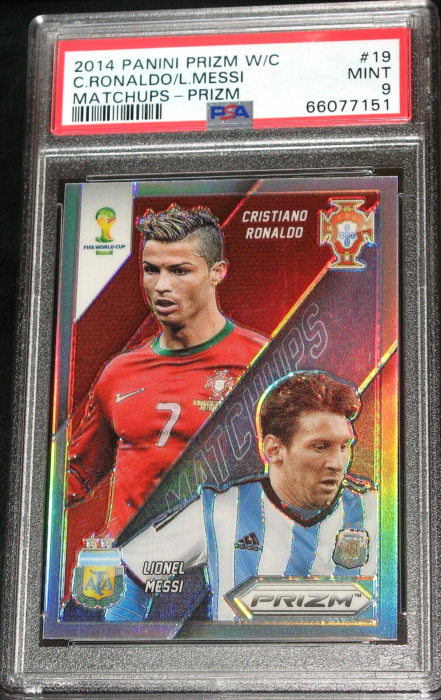
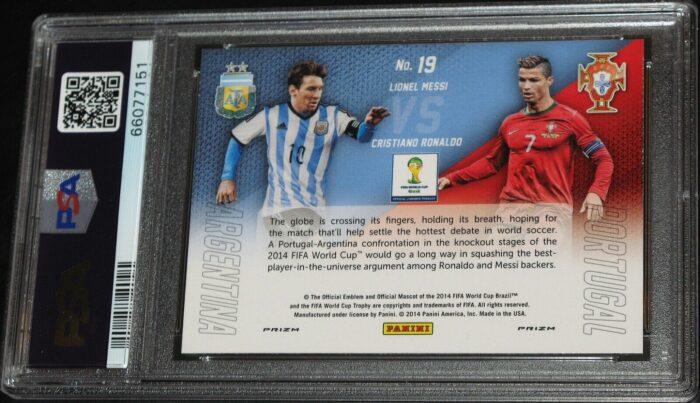
This is the first ever modern sports card set released for the world cup – including having colored parallels and autograph inserts. The set features a broad checklist of international stars. The base set includes 200 cards showcasing all 32 countries in the tournament. The Prizm parallels are Prizm, Blue, Red, Purple, Green Crystal, Gold (#/25), and Gold Power (#/5) and Black (#/1). There are also versions of select cards that are in Red, White, Blue, Blue and Red, and Yellow and Red.
The set features some of football’s top names from both 2014 and from the past. Pelé, Lionel Messi, Cristiano Ronaldo, Clint Dempsey, Robin van Persie, and Tim Howard are among those who are included in the set and also lending their signatures to the product, which keeps this set attractive to collectors long after its initial release.
The 2014 World Cup was hosted by the nation that has come to represent the very best of football, Brazil. The semi-finals were participated by Brazil, Germany, Netherlands, and Argentina. This tournament was Brazil’s biggest defeat since 1920 as they were defeated by Germany. The final battle was set up by Germany against Argentina, but it was Germany who took the lead and ultimately won the game. The 2014 World cup witnessed how Germany reclaimed a Trophy they had won before and become the first European team to win in the Americas.

I. Major Recent Sales Messi is on top of our list with the highest winning
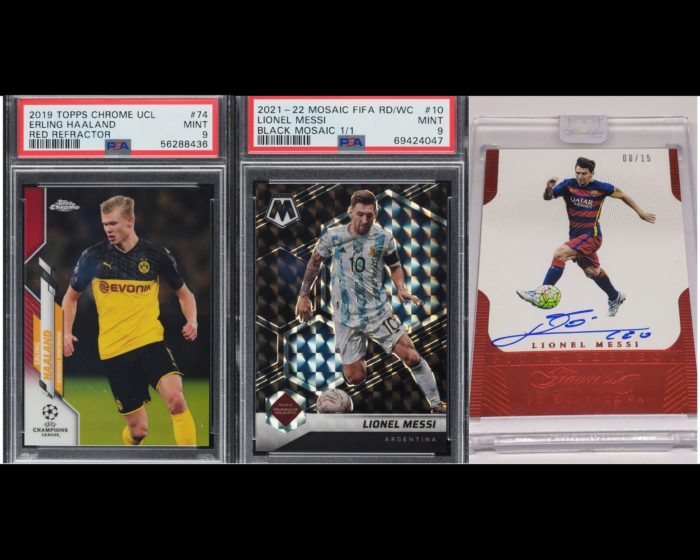
I. Major Recent Sales For this week’s sale, Haaland garnered the highest bid of $16,200, with 2 entries for this week. This was followed
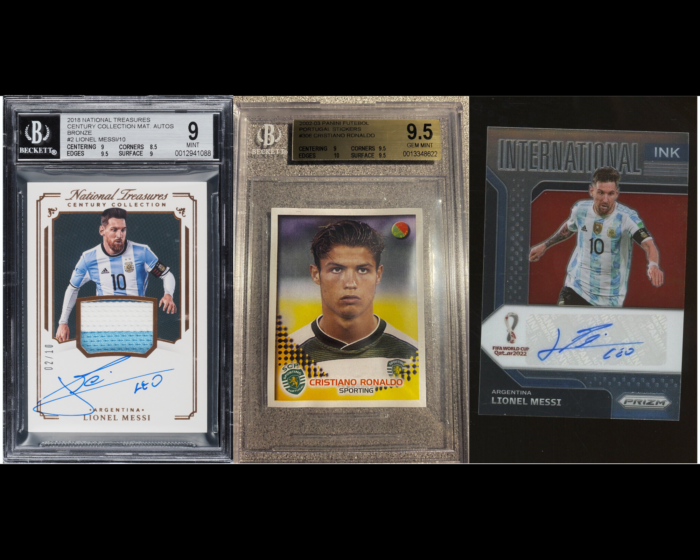
I. Major Recent Sales Messi is on top of our list for this week’s sale with 9 entries, this includes a dual booklet from Topps
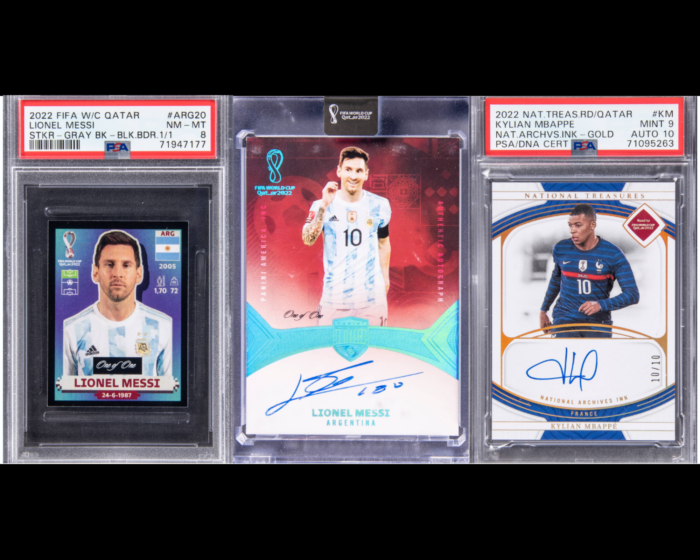
I. Major Recent Sales Like last week’s sale, Messi is on top of our list with 10 entries for this week’s sale and the highest
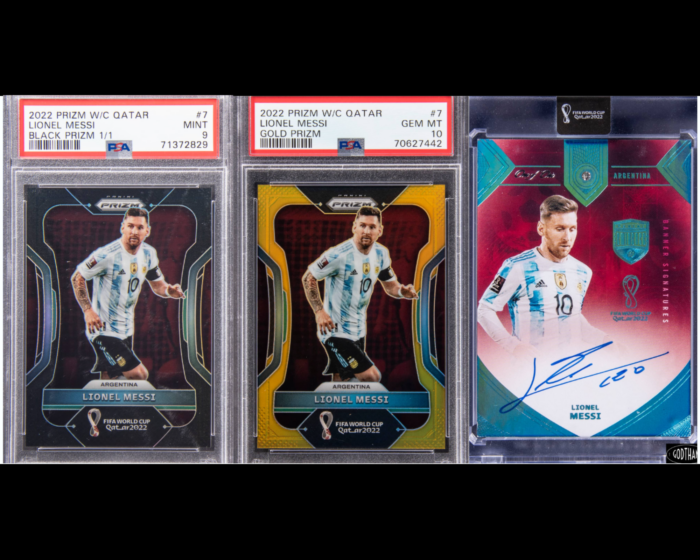
I. Major Recent Sales This is our list of the most 25 most significant soccer card sales from the last week, from the major auction

I. Major Recent Sales Topping out our list for this week’s sale is Haaland with the highest winning bid of $9000. Ronaldo and Mbappe round
© Copyright PeleCards 2022